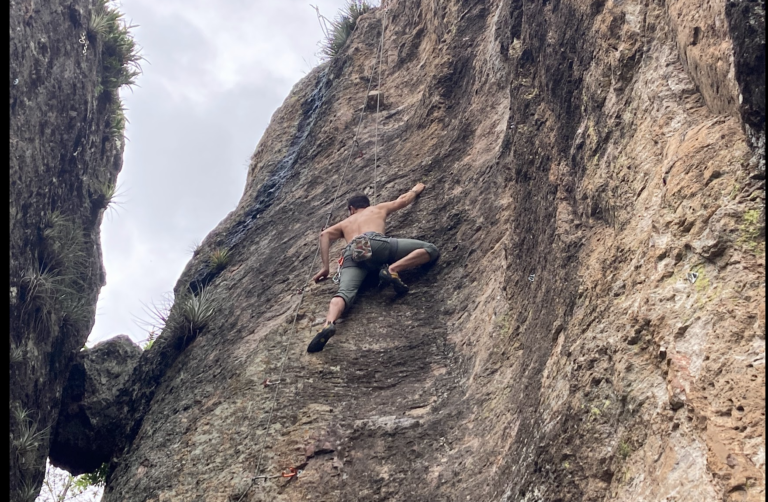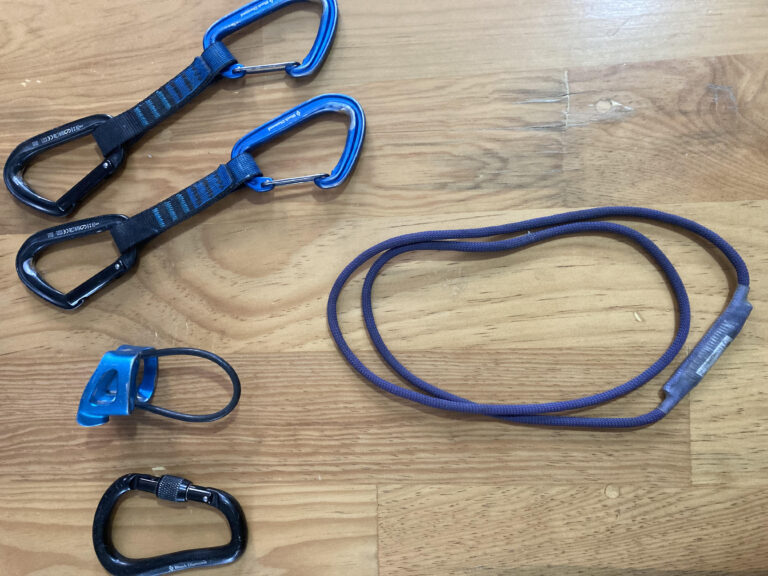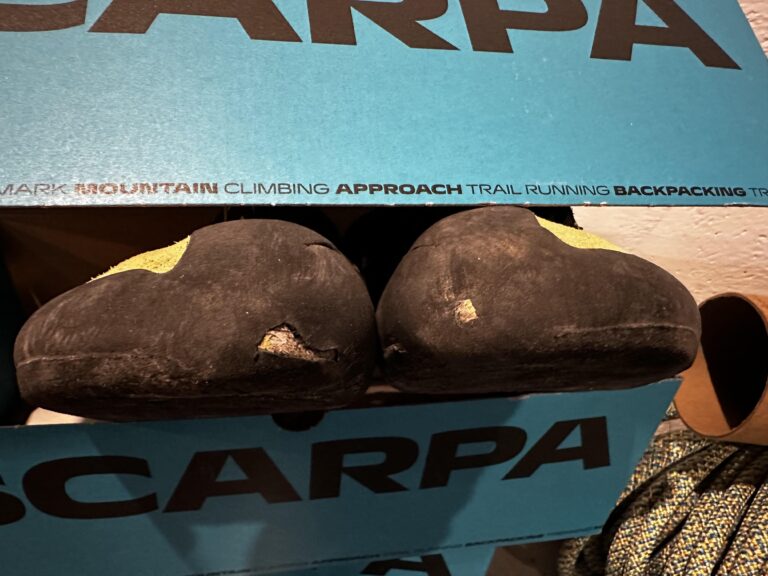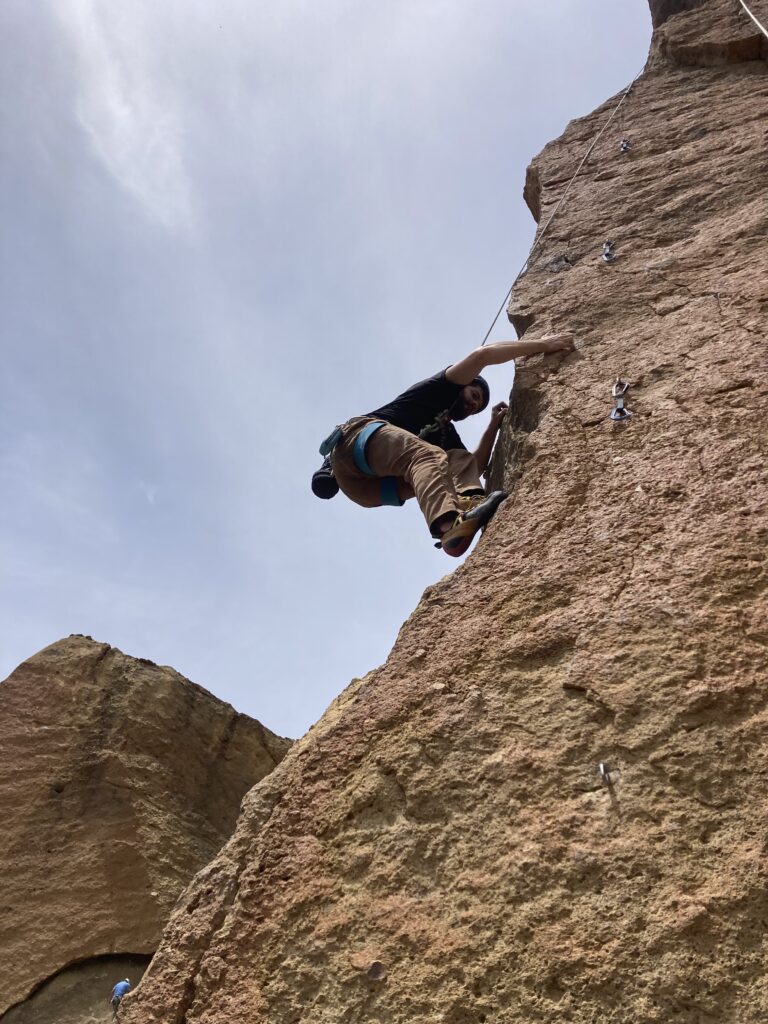Sport vs. Trad Climbing: The Complete Guide
Last Updated on: 11th May 2023, 08:56 am
Learning to climb requires using a new language. From equipment to slang to basic definitions, there is a lot to take in. Starting off, one of the most important things to understand is sport vs. trad climbing.
Table of Contents
- Sport vs. trad climbing: Difference explained
- What is trad climbing
- What is sport climbing
- Lead climbing safety
- Wrap up
Sport vs. trad climbing: Difference explained
Sport climbing emphasizes physical challenge and uses pre-placed bolts for protection, while trad climbing requires climbers to place their own gear and demands more technical skill and mental preparation. On sport routes, climbers only need quickdraws while trad routes require cams, nuts, and other speciality equipment.
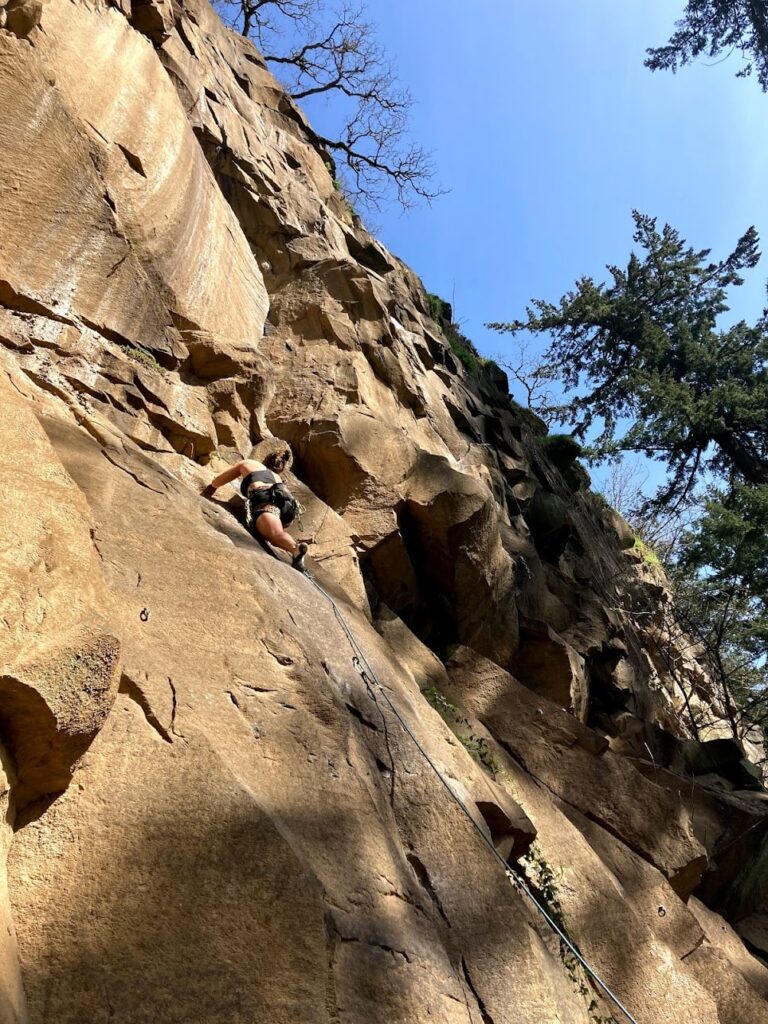
What is trad climbing
Trad is short for traditional. Trad climbing involves placing your own gear like cams and nuts to protect yourself from falls in natural features on the rock. Since trad climbs rely on these spots for gear placement, they often follow cracks any therefore require unique sets of skills to climb.
Placing your own protection from falls is no small undertaking. It requires lots of skills (and a good teacher) to learn to do properly. If your gear isn’t set correctly in the rock… well then you can end up taking some pretty spooky tumbles as seen below.
These days most new climbers start off bouldering or sport climbing. But I figured we would start with trad climbing because in the timeline of climbing, that came first.
Trad climbing gear
Trad climbing requires a lot more gear than sport climbing. Climbers have to place their own protection while they climb. That means rather than a bolt being drilled into a rock (as with sport climbing), they must place a piece of gear into the rock to protect themselves from a fall. There are three main types of gear for trad climbing — cams, nuts and hexes.
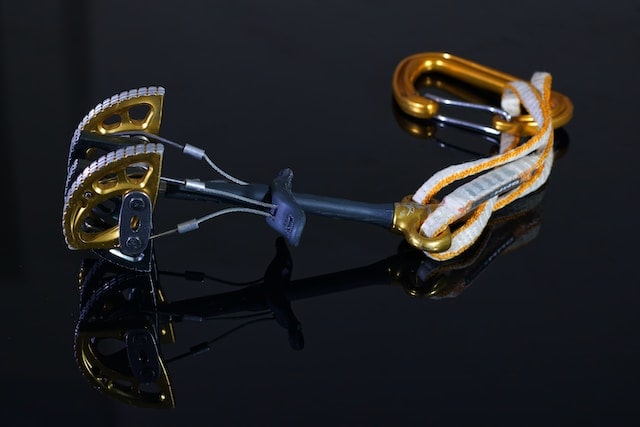
Cams, short for “camming devices,” might be the most well known device. Climbers place gear into a crack or other feature in the rock, then let them expand to create an anchor point. Cams work by using a series of spring-loaded lobes that can be compressed together. When a cam is placed in a crack, it expands so the lobes get snug inside the crack.
Hexes and nuts are a bit different. They are metal wedges with a wire cable attached to them. Climbers place them in cracks and other features in the rock by inserting them into tapered cracks and attached a carabiner to the outward end.
Both nuts and hexes require careful placement and proper sizing to ensure that they will hold in the event of a fall. The climber must also be aware of the direction of pull on the gear to ensure that it is not placed in a way that would cause it to pull out of the crack. These are the most popular types of protection, but there are others.
What is sport climbing
Sport climbing involves climbing on routes that are pre-equipped with permanent bolts for protection. Climbers attach quickdraws — two carabiners attached by fabric known as a dog bone — to the bolt with one carabiner, then clip the rope through the other.
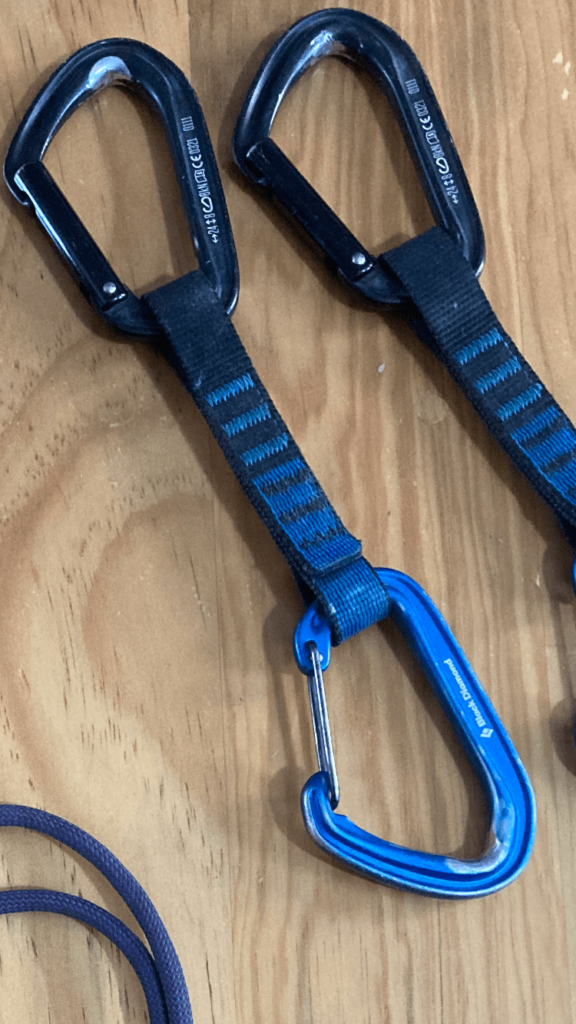
Before sport climbing, the only routes that could be climbed involved crack systems where climbers could place gear. Sport climbing unlocked new routes across the globe by allowing climbers to protect falls on any part of the rock.
Because of this sport climbing is a different style. From tiny routes to massive jug hauls on overhung roofs, there is endless variety you encounter while sport climbing.
Lead climbing safety
Sport climbing might be more straightforward than trad, but it doesn’t come without it’s own risks, especially lead climbing. Lead climbing involves climbing above your highest protection toward the next bolt in order to place another quickdraw. If you fall, you will drop below the last bolt you clipped the bolt through. The term comes from being the first one to climb (the lead).
When done properly, lead climbing is safe. The majority of problems come from incorrect clipping, ground falls, or poor placement of the legs. You can avoid some of these hazards by stick clipping and climbing within your means. But a huge part of the knowledge comes with experience, so make sure to learn with climbers that can let you know when your messing up!
Wrap up
Sport vs. lead climbing isn’t a question of which is better, its about how they are different. While trad certainly takes more skill to be safe, they are both forms of climbing that folks with proper gear, common sense, and a teacher that knows what they are doing can learn.
Climbing can be dangerous, so make sure to get out there with people you can trust. But once you get the hang of it, there’s a good chance you’ll be hooked!
